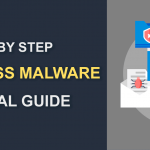HTTP Vs HTTPS: What is HTTPS and What does HTTPS mean?
November 09, 2022 | By Admin

Hypertext Transfer Protocol Secure (HTTPS)
Unless you have been living under a rock, you might have heard people talking about HTTPS while using the internet. So, what is HTTPS, and why HTTPS is important?
What does HTTPS Stand For
Well, as we store and share vast amounts of private and sensitive data over the internet (especially if you use social media platforms such as Facebook, Twitter, etc.), it makes good sense to take precautionary steps to protect our privacy and browse the web more securely.
You may have noticed the word "HTTP" at the URL of your browser. Other times you will see "HTTPS," and you wonder what the difference is between HTTP Vs HTTPS
.What is HTTPS?
HTTP Vs HTTPS - HTTP and HTTPS are internet protocols used by web browsers to transmit and receive data on the internet. What Means HTTP? - HTTP stands for Hypertext Transfer Protocol. The "S" at the end of HTTPS stands for "Secure". If the sites that you visit do not have HTTPS labels, it means that the data you enter on that site is not secure.
What Does HTTPS Mean?
HTTPS Meaning:
HTTPS means Hypertext Transfer Protocol Secure (HTTPS) and it is used to establish a secure connection between you and the site that you visit. With HTTPS enabled, communications between your web browser and the webserver (which hosts the website that you visit) get encrypted by a secure certificate known as an SSL (Secure Sockets Layer). This encryption of the transmitted data helps prevent hackers from sniffing your private information.
HTTPS Meaning - What does HTTPS Stand for?
What Does HTTPS Mean
HTTPS (Hypertext Transfer Protocol Secure) is mainly used for securing your transmitted data (information that you enter on a website) across the internet. HTTPS is a combination of HTTP with SSL/TLS (Transport Layer Security) protocol.
Is HTTP Secure?
HTTP is not a secure internet protocol. So when you communicate across the network by using the HTTP protocol, anyone can eavesdrop on your communication easily. So if you want to transfer sensitive information across the internet, then it needs to be transported securely, and it should be accessible to authorized users (web servers) only. For these purposes only, HTTPS was created.
HTTPS protocol is mainly used in websites such as:
- E-commerce Websites
- Banking Websites
- Payment Gateway
- Login Pages
- Email Apps
How does HTTPS Work? - HTTPS Protocol
What does HTTPS Mean - HTTPS or Hypertext Transfer Protocol Secure is a combination of HTTP (Hypertext Transfer Protocol) and a network security protocol (SSL or TLS). HTTP operates at the higher layer of the TCP/IP model. The SSL or TLS protocols operate at the lower sublayer. It encrypts the HTTP message during transmission and decrypts an HTTP message upon arrival.
Some of the major events during an HTTPS connection are given below:
- The client (your web browser) requests a secure page when you type something in the browser.
- The web server (which hosts the website that you visit) then sends a public key and its certificate (TLS or SSL).
- Your web browser verifies the security certificate: It checks whether the certificate is valid, not expired, and issued by a trusted party.
- After that, your web browser creates a Symmetric-key and sends it to the webserver.
- The web server will decrypt that key with the private key.
- After that, the webserver will send the requested page (in an encrypted format with a symmetric key) to your web browser.
- Finally, your web browser decrypts the received webpage with the symmetric key and displays the result to you.
- All the processes mentioned above take only a fraction of a second to complete. Hence, you won't be able to notice it when you use the internet.
HTTP Vs HTTPS: What is The Difference Between HTTP and HTTPS?
HTTP or the Hypertext Transfer Protocol is useful when a user is only intended to access the information from a given website. But it is not safe for the user to transfer his personal information. If the user wants to send their personal information across the internet, HTTPS or Hypertext Transfer Protocol Secure is the ideal solution.
HTTPS is not unhackable, but it is still a robust way to send personal information across the internet. HTTPS prevents hackers from exploiting software vulnerabilities, brute-forcing the users' access controls, and mitigates DDOS attacks (Distributed Denial of Services).
Some of the major differences between HTTP and HTTPS are given below:
HTTP Vs HTTPS:
HTTP use port 80 for communication whereas HTTPS protocol uses port 443 for communication
The websites that use HTTP will have a URL that starts with HTTP:// whereas, in the case of websites that use HTTPS, the URL starts with the HTTPS://
As mentioned earlier, HTTP is unsecured whereas HTTPS is secured
In the case of HTTP no security certificates are used but in the case of HTTPS security certificates such as the SSL/TLS are used.
In the case of the HTTP protocol, information is transmitted as plain text, but in the HTTPS protocol data is encrypted
Why Does Google Like HTTPS So Much?
Starting in July 2018, Chrome will mark all the HTTPS (Hypertext Transfer Protocol Secure) websites as "Not secure." When a user visits a non-HTTPS website, the chrome browser will showcase a "Not secure" label with a red warning icon in the URL status bar.
Starting with Chrome 70 which is said to be released in October 2018, users who visit visits an HTTPS website (which doesn't have SSL certification) will be greeted "Not secure" label along with a red warning icon in the URL status bar of Chrome browser.
Emily Schechter- Google Chrome's Security Product Manager announced the upcoming changes to Google Chrome via Google Chrome's official blog. According to her statement, starting with Google Chrome version 69 which will be released in September 2018, websites that have the HTTPS classification will not have the green "Secure" text and padlock icon that appears in the URL bar of the Chrome browser.
She further states that the decision to remove the secure box for HTTPS websites is because Google believes users know that the web is safe. Emily Schechter also added that internet users would recognize dangerous sites and remember not to enter them.
Emily Schechter also posted a graphic image of chrome version 69 showing the eventual treatment of HTTPS websites on her official post.
Reasons Behind the HTTPS Movement
When you need to use a website for purchase or provide sensitive information like credit card details, there are two big things to think about. The first is the connection from your computer (web browser) to the company's computer (webserver which hosts that website). Your name and other sensitive information should travel from one to the other; this connection needs to be secure so that cybercriminals cannot access the information en route.
There are two methods to tell if a site is secure. First is the address bar where you can see HTTP (Hypertext Transfer Protocol), secure websites have an address that starts with HTTPS. You can also look for the padlock icon on the browser. If you see HTTPS and padlock, the connection is encrypted and secure. But what about the company behind the website? How do you know it's not a criminal with a secure connection? Well, a new web security system makes this easy, modern web browsers show color and company names in their address bars to help users know that the site is trustworthy.
Websites that do not have an HTTPS (Hypertext Transfer Protocol Secure) label will need an SSL certificate to be able to be marked as safe by Chrome. The SSL functions as secure encryption by securing the interaction between the web server and the user.
SSL certificates are issued to websites by unbiased companies called Certificate Authorities. These reviewers ensure the organization behind the website and the website are trustworthy and are using a secure connection (i.e., ensuring Website Security). If the site passes the tests, the Certificate Authority issues an EV SSL certificate, and only sites with these certificates display color in the address bar including the company name along with the address.
If you see green color, it means the site is safe if it is red, you should not access that site. This process of website security checks prevents criminals from obtaining the SSL certificates to display the Green color information (Secure) on the browser's address bar. So, when you see a website with green info in the address bar, you can be sure that it is legit.
Switch To HTTPS/SSL or else It Can Damage Your Businesses
If your website is still in HTTP (Hypertext Transfer Protocol), you should switch it to HTTPS/SSL immediately as most of the online visitors to your site might not stay on your website when they see a warning in their Chrome browser. It is also worth mentioning that Firefox and other web browsers will soon follow the lead of chrome.
This can be devasting for your business, especially if you run an e-commerce website. Most internet users would not be willing to purchase products or services from your site when there is an 'insecure' warning displayed on their web browsers (even if the checkout page is secure).
When you use an SSL Certificate on your website, it means that you are encrypting all information that is being shared on your website. It has a two-way process, SSL will encrypt information when a customer shares his/her information with you, and when you share data with your customer.
It means that no one can access this encrypted information except you and your customer.
That is how SSL works!
SSL makes sure that every data shared on your website remains encrypted from possible cyber-attacks. Even if hackers try to intercept it, they can not get hold of the information because it is secured (encrypted).
Comodo SSL and the cWatch Pro (Web Application Firewall)
Staying on top of today's security needs has become a real challenge. Be it being aware of the growing complexities of your website security infrastructure and the associated budgetary requirements or simply staying up-to-date in such a fast-moving environment, trying to predict what's coming next seems impossible.
With the cost of data breaches rising year on year, website attacks hitting the headlines worldwide and unexpected certificate expiry affecting global organizations, no organization can take website security for granted.
Most people tend to forget to add website protection and security when they create their websites. You cannot afford to do that in today's threat landscape. You must add protection and security features to your site.
Website security is a crucial factor for the success of any web-based business. If security gets compromised, then it will negatively impact the company and sales. If you do not add those features to your website design strategy, a hacker can hack your site and get hold of important digital files and images on your website. You must add website protection and security to your site to prevent cyber attacks and illegal downloading of digital data and images from your website.
Comodo SSL Certificate is a fully functional Digital Security Certificate that is valid for 90 days. It is recognized and trusted by 99.9% of all web browsers and devices. You can set it up and use it on your website almost instantly. After a successful deployment of Comodo SSL, your customers (website visitors) will notice a golden padlock icon before your website URL and won't see security warnings.
In addition to that, you need a flexible, proactive, and straightforward web security solution that identifies malware, removes it safely, and helps to prevent future attacks. That solution is Comodo cWatch; it is the best website security software that is available in the market today. It can detect and remove web security threats and enhance the speed of the website. With its powerful cloud-based malware scanning, Comodo cWatch will go beyond your expectations.
You might have put in so much of your time and effort on your website (and your brand), so you need to exercise caution when it comes to website security. Try cWatch today!
Related Resource
Website Vulnerability Scanner Tool
How to Identify a Safe Website
How to Run a Virus Scan on a Website


 (51 votes, average: 3.86 out of 5, rated)
(51 votes, average: 3.86 out of 5, rated)









